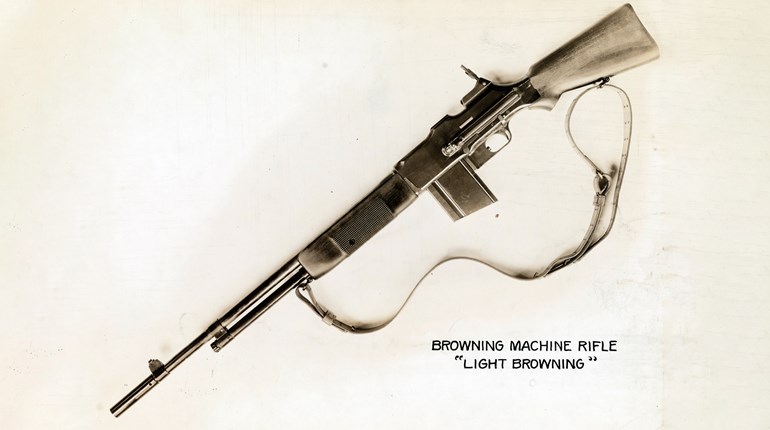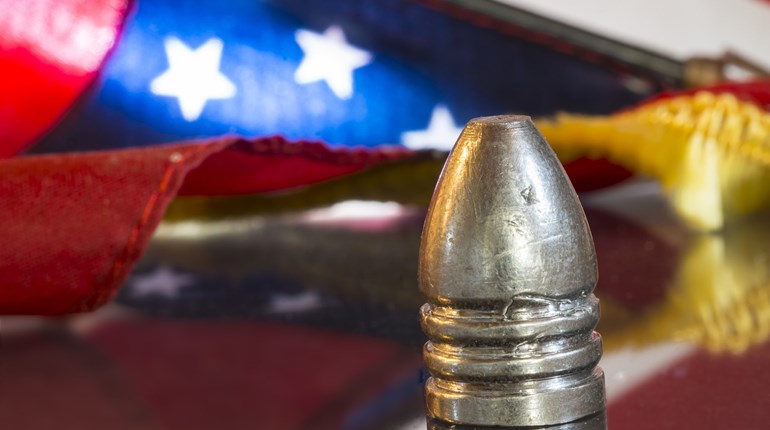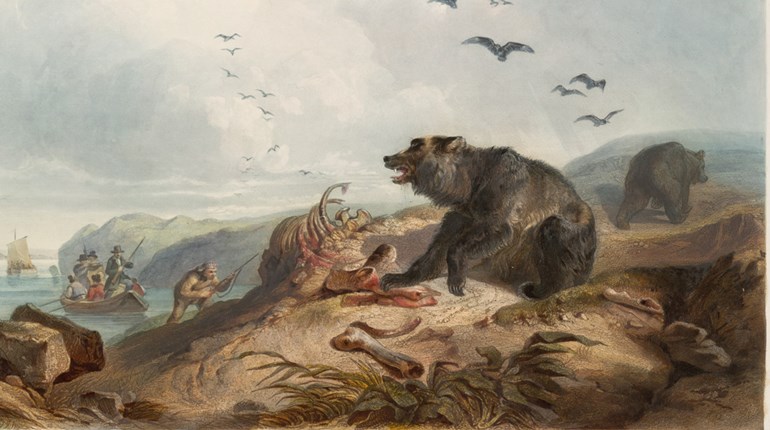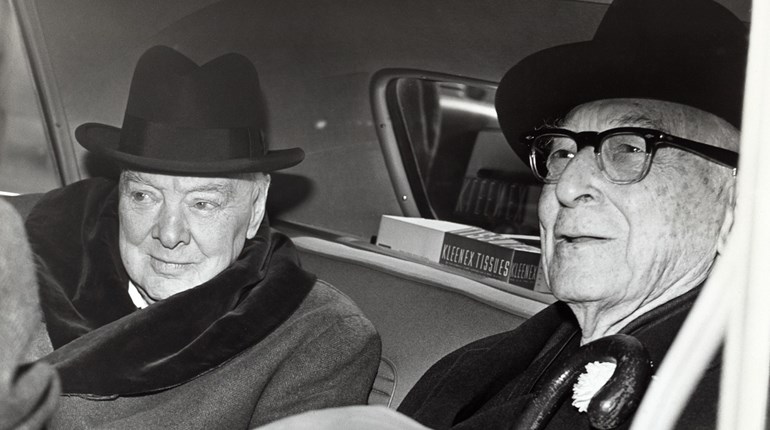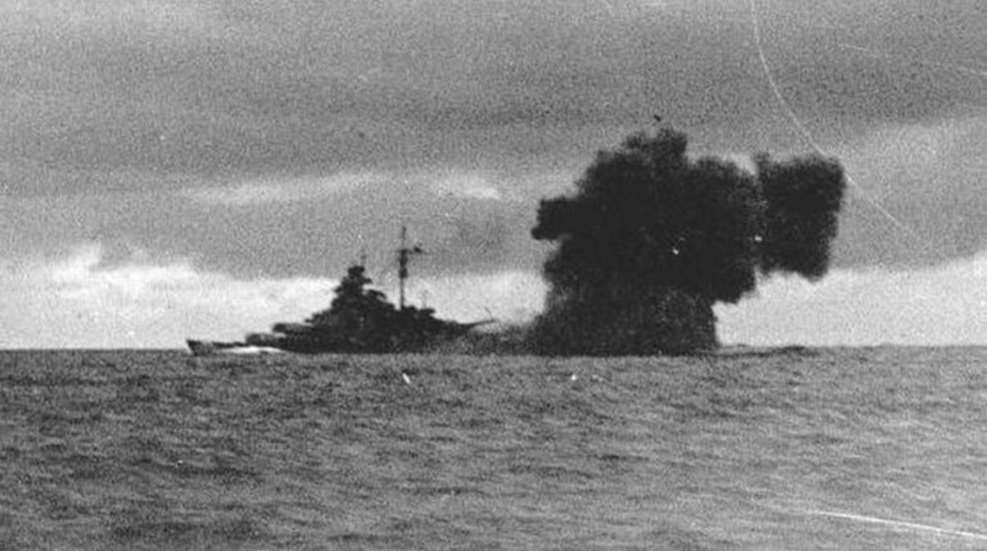
In May of 1941, World War II had only recently begun, pitting the United Kingdom (Great Britain) and its allies against Germany, Japan and their allies, known as the Axis nations. The United States would not enter the fray for another seven months, declaring war on Japan the day after Japanese warplanes attacked America’s Pacific Fleet at Pearl Harbor, Hawaii, on December 7.
The war was rapidly spreading over both land and sea, and one of the largest British battlecruisers at the time was HMS Hood. The pride of the Royal Navy, she was two decades old; a tried-and-true vessel, her veteran crew considered it a high privilege to serve aboard the ship, believing Hood invincible.
Germany had recently launched a large, intimidating, state-of-the-art battleship of its own: Bismarck. Measuring nearly three football fields in length, Bismarck and her sister ship Tirpitz were the biggest battleships ever built by Germany, and two of the largest built by any European power. Bismarck’s initial assignment was to sail into the North Atlantic, accompanied by the heavy cruiser Prinz Eugen, and attack Allied supply ships moving back and forth between North America and the UK.
Hood and several other British ships were ordered to block Bismarck and Prinz Eugen. Upon making contact, Hood drew concentrated fire from both German ships in what became known as the Battle of Denmark Strait. Bismarck began firing her big guns at a range of 15 miles, an incredible distance for that era. Hood was soon hit several times amidship by armor-piercing shells, with one shell exploding in her ammunition magazine. The ship broke in two and sank in dramatic fashion, first her stern then her bow rising out of the water at a sharp angle before slipping beneath the waves. Hood sank in just eight minutes, taking all but three of her 1,418-man crew with her.
All of England was stunned. How could the mighty, beloved Hood be lost, and especially so quickly? But that emotion soon turned to rage, demanding revenge. Prime Minister Winston Churchill ordered every Royal Navy ship and plane in the area to locate Bismarck and do whatever it took to sink her. A total of six battleships and battlecruisers, two aircraft carriers, 13 cruisers, and 21 destroyers were committed to finding Bismarck. The hunt was on, the battle cry “Sink the Bismarck!” echoing down the passageways of each ship.
However, a squall was moving in, and the weather was rapidly worsening. With the seas increasing in size and the heavy cloud cover overhead protecting her from being spotted by aircraft, would Bismarck be able to slip away to safety? She had taken three hits during the recent battle, so needed to make port for repairs. Her destination was Saint-Nazaire along the coast of German-occupied France, but the British, of course, did not have that intelligence.
The clouds finally cleared a week later, allowing Ensign Leonard B. Smith, piloting a Catalina amphibious aircraft, to locate the Bismarck northwest of Brest, France. Interestingly, Smith was not a British aviator, but rather a U.S. Navy officer. A number of American pilots, who had flown Catalinas across the Atlantic to the UK to familiarize Royal Air Force (RAF) crews with the plane, were “unofficially” used as copilots on some combat operations before the United States entered the war.
Nevertheless, it was the break the Brits had been hoping and praying for. The location of Bismarck was relayed by radio, and nearby Allied ships and planes immediately began converging. And none too soon—Bismarck was less than a day from port.
First on scene were British torpedo planes, one of which scored a hit on Bismarck’s left rudder, jamming it in place. Able now to only move in wide circles, Germany’s largest battleship must have appeared as a crippled, sitting duck to the four arriving British battleships. But that so-called “duck” was still dangerous, able to use all its guns; so once within range the Brits took no chances, firing some 2,800 shells and scoring more than 400 hits.
Bismarck was so well armored, however, that she refused to go down. Her commanding officer, Captain Ernst Lindemann, signaled German headquarters: “Ship unmaneuverable. We will fight to the last shell. Long live the Führer.” But not long after that message was sent, a direct hit from a 16-inch-diameter shell destroyed Bismarck’s forward superstructure, likely killing the captain and most of his senior staff. With the bridge no longer responding, executive officer Hans Oels took command of the ship and eventually ordered it scuttled. The scuttling would accomplish two things, he hoped. One, it would not allow the British to capture Bismarck and learn her technological secrets. And two, it would give the crew time to abandon ship, reducing the number of casualties.
As Bismarck ceased firing and its crew members began jumping overboard, the British ships were ordered to move in to rescue what men they could. But that order was soon rescinded when a report was received of a German U-boat (submarine) in the area. As a result, of a crew of more than 2,200 sailors, only 114 men were rescued, the rest left to their fate in the cold, gray waters of the Atlantic.
The British then ordered the cruiser Dorsetshire to torpedo the badly-listing Bismarck from nearly pointblank range, finally taking her down on the morning of May 27, 1941. An interesting sidenote is that during Bismarck’s brief career—lasting just eight months—she conducted only one offensive operation, lasting just eight days.
Many years after the war, in 1989, what was left of Bismarck was located by oceanographer Robert Ballard, the same person who had found RMS Titanic in 1985. Bismarck was 15,000 feet below the surface of the sea, sitting upright on the sloping sides of an extinct volcano.













